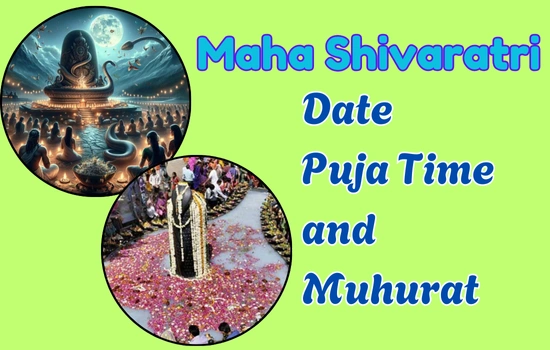Maha Shivaratri, the “Great Night of Lord Shiva,” is one of the most significant Hindu festivals dedicated to Lord Shiva, the destroyer and transformer in the Hindu trinity. This auspicious occasion is observed on the Chaturdashi Tithi (14th day) of the Krishna Paksha (waning moon phase) in the Hindu month of Magha or Phalguna, depending on the regional calendar. In 2025, Maha Shivaratri will be celebrated on Wednesday, February 26, 2025.
This sacred festival is observed with great devotion, as devotees offer prayers, perform rituals, and seek Lord Shiva’s blessings for spiritual growth, liberation, and a harmonious life.
Significance of Maha Shivaratri

Maha Shivaratri is a night of spiritual awakening and devotion. It is believed that Lord Shiva performed the Tandava, the cosmic dance of creation and destruction, on this night. According to Hindu mythology, it is also the night when Lord Shiva married Goddess Parvati. Astrologically, Maha Shivaratri is a time to align with cosmic energies, meditate, and enhance spiritual practices.
Fasting, chanting Om Namah Shivaya, and observing night-long vigils at Shiva temples are integral to the celebration. Devotees seek forgiveness for their sins and pray for moksha (liberation from the cycle of birth and death).
Maha Shivaratri 2025: Date and Puja Muhurat
The observance of Maha Shivaratri involves performing pujas during the Nishita Kaal (midnight), which is considered the most auspicious time to worship Lord Shiva. Here are the key timings for Maha Shivaratri in 2025:
- Date: Wednesday, February 26, 2025
- Chaturdashi Tithi Begins: 11:08 AM on Feb 26, 2025
- Chaturdashi Tithi Ends: 08:54 AM on Feb 27, 2025
- Nishita Kaal Puja Time: 12:09 AM to 12:59 AM, Feb 27
- Parana Time (Breaking the Fast): 06:48 AM to 08:54 AM
It is recommended to perform the puja during all four prahars (time divisions) of the night for maximum spiritual benefit.
Rituals and Practices
Maha Shivaratri is observed with deep devotion and involves several rituals that hold spiritual significance:
1. Fasting: Devotees observe a day-long fast, consuming only fruits and water or abstaining from food altogether. This fast is believed to purify the body and mind.
2. Abhishekam (Sacred Bath): The Shivling is bathed with milk, honey, curd, ghee, and water, symbolizing purification and devotion. Each offering has its spiritual significance.
3. Offering Bilva Leaves: Bilva (bael) leaves are offered to Lord Shiva as they are considered sacred and dear to Him.
4. Chanting and Meditation: Devotees chant Om Namah Shivaya and recite hymns like the Maha Mrityunjaya Mantra to invoke divine blessings and focus on spiritual growth.
5. Night-long Vigil (Jagaran): Devotees stay awake all night, singing bhajans and meditating on Lord Shiva. It signifies overcoming darkness and ignorance.
Astrological Significance
Maha Shivaratri occurs during a time when cosmic energies align to enhance spiritual growth. The planetary positions on this day create a conducive environment for meditation and introspection. Worshipping Lord Shiva on this night is believed to neutralize negative karma, improve relationships, and bring prosperity.
Maha Shivaratri and Marital Harmony
Maha Shivaratri is particularly significant for married and unmarried women. Married women pray for their husband’s well-being and marital bliss, while unmarried women seek an ideal life partner by observing rituals and fasting for Lord Shiva’s blessings.
Maha Shivaratri is a divine opportunity to connect with Lord Shiva’s infinite energy and grace. By observing the prescribed rituals, performing puja during the Nishita Kaal, and maintaining devotion throughout the day and night, devotees can experience spiritual awakening and inner peace. May this Maha Shivaratri bring blessings, happiness, and harmony to your life! Har Har Mahadev!

